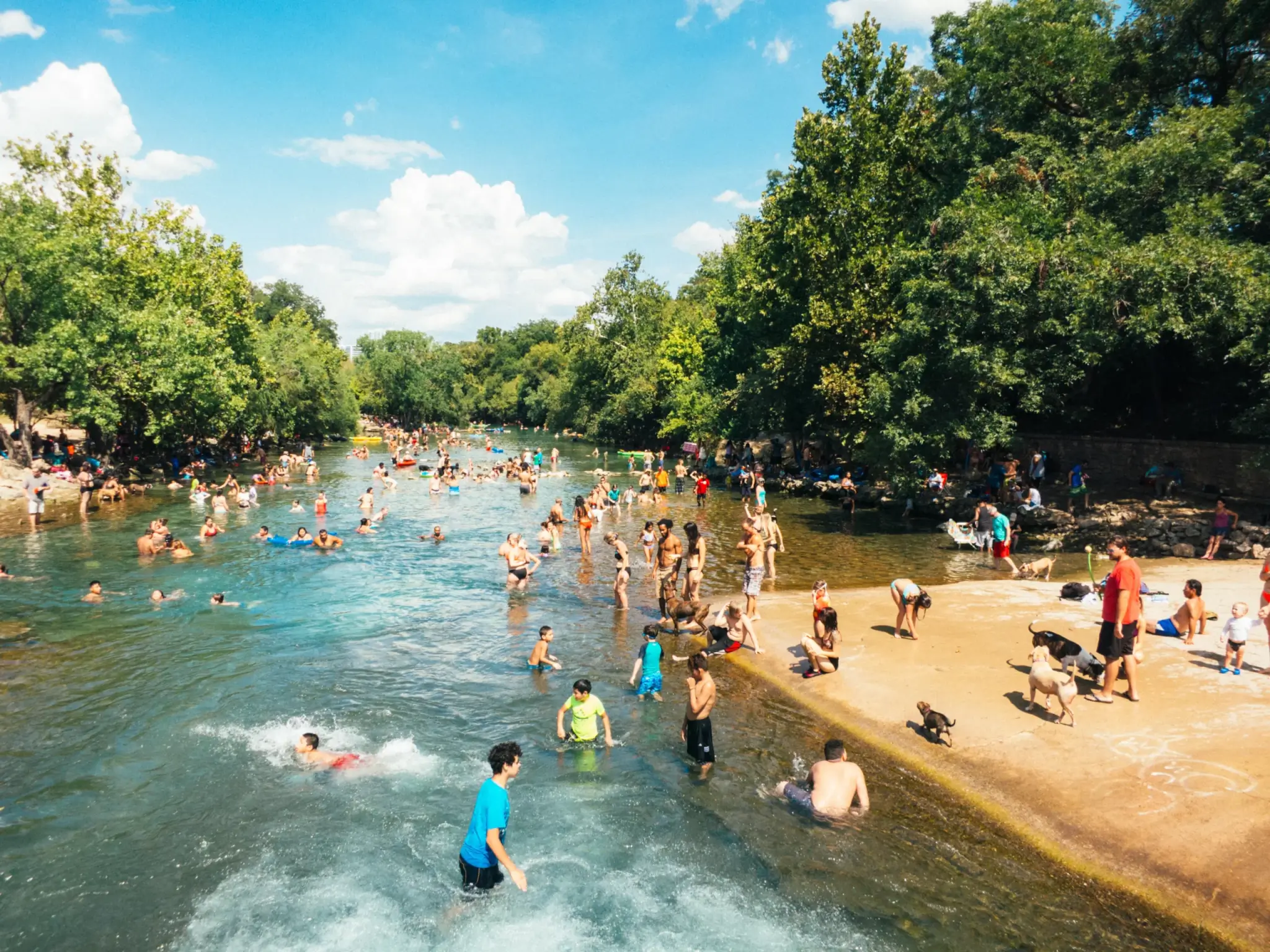Green Infrastructure and Equity: Building a Fairer Future for Our Cities
In recent years, green infrastructure has emerged as a powerful tool in urban planning, offering solutions to environmental challenges such as stormwater management, urban heat islands, and air pollution. From green roofs and permeable pavements to urban parks and rain gardens, these innovations promise not only a greener, more sustainable environment but also improved quality of life for city dwellers. However, as we embrace these eco-friendly solutions, it’s crucial to ensure that equity plays a central role in their implementation.
What Is Green Infrastructure?
Green infrastructure refers to a network of natural and semi-natural features integrated into urban areas to address environmental and societal needs. Unlike traditional infrastructure, which often relies on gray, built systems like sewers and concrete channels, green infrastructure utilizes vegetation and natural processes to manage water, reduce pollution, and provide recreational spaces. Key examples include:
- Green Roofs: Roofs covered with vegetation that help insulate buildings, reduce stormwater runoff, and improve air quality.
- Permeable Pavements: Surfaces that allow water to pass through, reducing runoff and replenishing groundwater.
- Rain Gardens: Landscaped areas designed to capture and filter stormwater before it enters drainage systems.
- Urban Parks: Green spaces that offer recreational opportunities, improve mental well-being, and provide habitat for urban wildlife.
The Case for Equity in Green Infrastructure
While the benefits of green infrastructure are clear, the distribution and accessibility of these solutions are not always equitable. This disparity can lead to uneven benefits across different communities, particularly affecting marginalized and underserved populations. Here’s why integrating equity into green infrastructure is essential:
- Addressing Historical Inequities
Many cities have long histories of unequal access to green spaces and environmental amenities. Communities of color and low-income neighborhoods often face higher exposure to pollution, fewer green spaces, and inadequate stormwater management. Green infrastructure can help rectify these imbalances by ensuring that all neighborhoods benefit from cleaner air, reduced flooding, and access to nature.
- Enhancing Public Health
Access to green infrastructure directly impacts public health. Green spaces reduce heat islands, improve air quality, and provide areas for physical activity, which can mitigate health issues such as respiratory problems and heat stress. Ensuring that green infrastructure is distributed equitably can help reduce health disparities and improve overall community well-being.
- Boosting Economic Opportunities
Green infrastructure projects can create jobs and stimulate local economies. However, without equitable planning, the economic benefits of these projects may not reach the communities that need them most. By prioritizing investments in underserved areas, we can create opportunities for local employment, business development, and community empowerment.
- Promoting Social Cohesion
Well-designed green spaces can foster social interaction and community cohesion. When green infrastructure is equitably distributed, it enhances social equity by providing all residents with opportunities for leisure, recreation, and community building. This inclusivity helps strengthen the social fabric of urban areas and promotes a sense of belonging.

The Role of Maintenance in Promoting Continued Equity
Maintenance is a crucial aspect of ensuring that green infrastructure continues to benefit all community members equitably. Regular upkeep of green spaces, such as parks, rain gardens, and green roofs, ensures that they remain functional, safe, and accessible. When maintenance is neglected, green infrastructure can deteriorate, leading to reduced benefits and potentially exacerbating existing inequities. For instance, poorly maintained parks in underserved areas may become less inviting or unusable, diminishing their value to local residents. On the other hand, consistent and equitable maintenance ensures that all communities, especially those that have historically been marginalized, can continue to enjoy the full advantages of green infrastructure. By investing in ongoing maintenance and support, cities can uphold the promise of equity, ensuring that green infrastructure serves as a lasting and reliable resource for all.
Case Study: The Bronx River Greenway Project
A notable example of how maintenance and equity intersect in green infrastructure is the Bronx River Greenway project in New York City. This project aimed to transform a neglected and industrial stretch along the Bronx River into a vibrant green corridor with walking and biking paths, parks, and ecological restoration areas.
Initial Success and Maintenance Challenges
The Greenway project initially brought significant benefits to the Bronx, a historically underserved area with a diverse population. The new green spaces provided recreational opportunities, improved local biodiversity, and helped manage stormwater runoff. However, the success of the project was threatened by maintenance issues. Due to budget constraints and inadequate funding for ongoing care, parts of the Greenway began to fall into disrepair. Overgrown vegetation, litter, and damaged infrastructure reduced the usability and attractiveness of the green spaces, particularly affecting the low-income communities that relied on these areas for recreational and social activities.
Equitable Solutions and Improvements
In response to these challenges, local organizations and community groups advocated for more equitable maintenance practices. They highlighted the disproportionate impact of maintenance neglect on underserved neighborhoods and pushed for increased funding and community involvement in upkeep efforts. The city responded by partnering with local nonprofits and creating volunteer programs to support regular maintenance. These initiatives not only helped restore the Greenway but also provided job opportunities and skill-building for local residents.
By integrating community input into maintenance plans and prioritizing funding for areas with the greatest need, the Bronx River Greenway project demonstrated how equitable maintenance can sustain the benefits of green infrastructure. It also illustrated the importance of ongoing support to ensure that all community members can continue to enjoy and benefit from green spaces.

Strategies for Integrating Equity into Green Infrastructure
-
Community Involvement
Engaging local communities in the planning and decision-making processes ensures that green infrastructure projects address the specific needs and preferences of residents. Participatory planning can help identify priorities, gain support, and ensure that projects are culturally and contextually relevant.
-
Targeted Investments
Prioritize green infrastructure investments in historically underserved neighborhoods. This targeted approach can help correct imbalances and provide immediate benefits to those who have been most affected by environmental injustices.
-
Partnerships and Collaboration
Collaborate with non-profit organizations, community groups, and local stakeholders to leverage resources and expertise. These partnerships can enhance project outcomes and ensure that initiatives are aligned with community needs and goals.
-
Equitable Access and Maintenance
Ensure that green infrastructure is not only installed but also maintained and accessible to all residents. Regular upkeep, equitable access to amenities, and ongoing support are crucial for the long-term success and impact of green infrastructure projects.
-
Policy and Advocacy
Advocate for policies that promote equity in green infrastructure. Support regulations and funding mechanisms that prioritize environmental justice and address disparities in access to green spaces and services.
Conclusion
Green infrastructure offers a pathway to more sustainable, resilient, and livable urban environments. However, to fully realize these benefits, equity must be a fundamental consideration in planning and implementation. By ensuring that all communities have access to green infrastructure and its associated benefits, we can build a fairer, healthier, and more inclusive future for our cities.
Incorporating equity into green infrastructure not only addresses historical injustices but also enhances public health, fosters economic opportunity, and strengthens community bonds. Maintenance plays a pivotal role in upholding these values by ensuring that all residents, regardless of their background or income, can continue to enjoy and benefit from green infrastructure. The Bronx River Greenway project exemplifies how equitable maintenance can sustain and enhance the advantages of green infrastructure, showcasing the importance of ongoing support and community involvement. As we advance our cities towards greener futures, let’s make sure that every resident shares in the rewards of a well-planned and equitable green infrastructure network.


